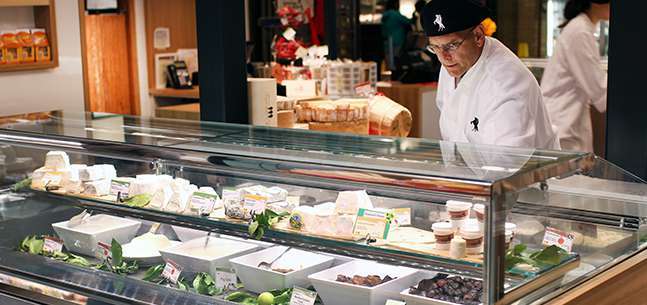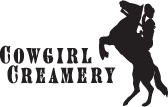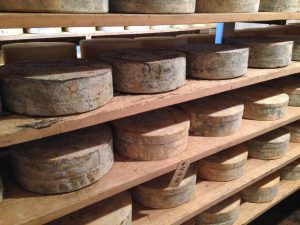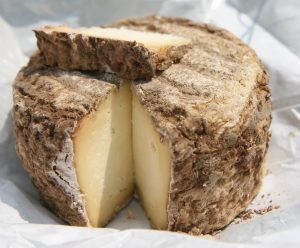 Maple Planked Brie With Mushroom-Walnut Ragout
Maple Planked Brie With Mushroom-Walnut Ragout
Copyright 2011 Artisan Cheese Making at Home by Mary Karlin.
Serves 8
Roasting or grilling on aromatic wood planks is an easy, flavor-enhancing way of cooking. This method can be done on the stovetop in a cast-iron grill pan, but it is better still on a wood-fired grill or in a wood-fired oven, and it can even be done on a campfire. The planks are soaked in water or in a spirit-infused liquid, and then lightly charred on one side to release the aromatic oils in the wood. The food to be cooked is set on the charred side and roasted or grilled. For this simple planked dish, a beautiful bloomy-rind Brie is served on toast with a mushroom-walnut ragout that cooks while the cheese grills.
1-1/2 pounds fresh meaty mushrooms, such as shiitake, royal trumpet, or oyster
4 cloves garlic, thinly sliced lengthwise
1 cup lightly toasted walnut pieces
Four 1/4-inch strips lemon zest
Kosher salt
Freshly ground black pepper
Olive oil
2 long sprigs fresh thyme
1 bay leaf
1 cup dry white wine
2 wheels firm, ripe Brie, about 5 to 6 ounces each (page 136), at room temperature
Four 1/2-inch-thick slices artisan whole wheat raisin or currant bread
Submerge two 6-inch-square, ½-inch-thick maple planks in water and soak for 1 hour. Preheat a grill to medium heat (400°F), with areas for both direct and indirect heat. When hot, place a clay baking vessel or cast-iron skillet on the grill to preheat. Clean and trim the mushrooms, then cut lengthwise into thick slices. Put them in a bowl, add the garlic, walnuts, lemon zest, and some salt and pepper and toss to combine. Drizzle with olive oil just to moisten.
Place the mixture in the preheated pan and add the thyme, bay leaf, and wine. Place on the grill over indirect heat to roast until the mushrooms are golden, about 30 minutes, covering the grill. Taste and add more salt and pepper as needed. Keep warm until ready to serve. While the ragout cooks, take the maple planks out of the water and let them drain for 10 minutes. Carefully cut the top rinds off the Brie and place them back on the wheels as lids (these will be removed later). Toast one side of each plank over direct heat until well marked and fragrant, 5 to 7 minutes. Place a wheel of Brie on the marked side of each plank and place on the grill over indirect heat. Close the lid and grill the Brie for 10 minutes. Remove the top rinds from the cheeses and discard, close the lid, and continue to cook for another 5 minutes, or until the surface of the cheese is golden brown and the interior is soft and oozy but the rind is intact. Grill the bread on both sides while cooking the Brie, then cut the toasts in half diagonally and keep them warm. Remove the planked Brie from the grill and let cool for a few minutes. Take the planks to the table and spoon the roasted mushrooms over the cheeses. Smear the Brie on the toasts and load them up with ragout.
Copyright 2011 Artisan Cheese Making at Home by Mary Karlin.
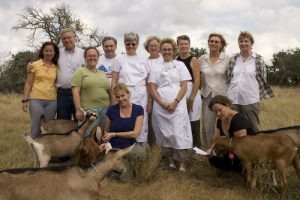 Pure Luck Farm and Dairy produces some of the finest goat cheese west of the Mississippi. Each year for over a decade, the American Cheese Society has presented Pure Luck owner Amelia Sweethardt with a ribbons to take back home to her farm in Dripping Springs, TX. While you can find Pure Luck’s award-winning artisan cheese at Whole Foods Market and dozens of local Austin restaurants, rarer is the opportunity to check out Pure Luck Farm and Dairy itself. However, each spring and fall you can take their wonderful goat cheesemaking weekend workshop that teaches the secrets to making delicious chèvre (hint: it’s the quality of goat milk) while enjoying their lovely dairy and farm in Hill Country. We think you will find the workshops udderly delightful!
Pure Luck Farm and Dairy produces some of the finest goat cheese west of the Mississippi. Each year for over a decade, the American Cheese Society has presented Pure Luck owner Amelia Sweethardt with a ribbons to take back home to her farm in Dripping Springs, TX. While you can find Pure Luck’s award-winning artisan cheese at Whole Foods Market and dozens of local Austin restaurants, rarer is the opportunity to check out Pure Luck Farm and Dairy itself. However, each spring and fall you can take their wonderful goat cheesemaking weekend workshop that teaches the secrets to making delicious chèvre (hint: it’s the quality of goat milk) while enjoying their lovely dairy and farm in Hill Country. We think you will find the workshops udderly delightful!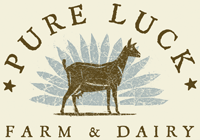
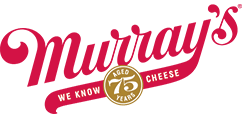
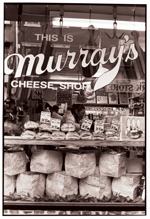 Founded in 1940 by Murray Greenberg, Murray’s is proud to be a
Founded in 1940 by Murray Greenberg, Murray’s is proud to be a 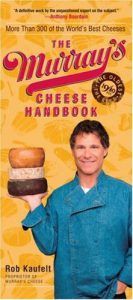 and part of the neighborhood’s rich food history. Murray was a Jewish veteran of the
and part of the neighborhood’s rich food history. Murray was a Jewish veteran of the 

